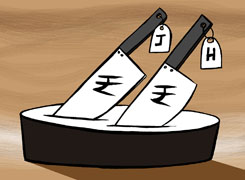Ramalingam Kalirajan |9690 Answers |Ask -Follow
Mutual Funds, Financial Planning Expert - Answered on May 21, 2024
He has an MBA in finance from the University of Madras and is a certified financial planner.
He is the director and chief financial planner at Holistic Investment, a Chennai-based firm that offers financial planning and wealth management advice.... more

Thanks a Lot for your suggestion. I have 1 question so inventing in Direct fund is risk than Dynamic allocation ? Growth Debit Vs Hybrid vs Growth Equity which is more Risk sir
Direct Funds vs. Dynamic Allocation Funds
Direct Funds: These are mutual fund plans you invest in directly, without an advisor. They typically have lower expense ratios (fees) compared to regular plans, potentially leading to slightly higher returns over time. However, direct funds require you to do your own research and manage the investment. Risk comes from choosing the wrong fund or asset allocation for your goals.
Dynamic Allocation Funds: These are actively managed funds that adjust their asset allocation (mix of stocks, bonds, etc.) based on market conditions. They aim to provide a balance between growth potential and risk mitigation. Risk comes from the fund manager's decisions and potential for market volatility.
Investing in direct mutual funds can be an attractive proposition due to lower expense ratios and potential for higher returns. However, these benefits come with certain risks, especially for investors who may not be well-versed in financial markets. Below, I detail the various risks associated with direct funds to help you make a well-informed decision.
Lack of Professional Guidance
Self-Managed Investments:
Complex Decision-Making: Direct fund investments require the investor to make all decisions independently. This includes choosing the right funds, determining asset allocation, and timing market entries and exits.
No Financial Advisor: Unlike regular funds, direct funds do not involve financial advisors or distributors who can provide tailored advice and recommendations based on your financial goals and risk tolerance.
Risk of Emotional Decisions: Without professional guidance, investors may make emotional decisions, such as panic selling during market downturns or buying at market highs, which can adversely impact returns.
Knowledge and Experience Required:
Research and Analysis: Investors must conduct their own research and analysis to select suitable funds. This involves understanding fund performance, fund manager strategies, market conditions, and economic indicators.
Continuous Monitoring: Direct fund investments require regular monitoring and review to ensure they remain aligned with financial goals. This can be time-consuming and challenging for those with limited investment knowledge or time.
Market Risk and Volatility
Exposure to Market Fluctuations:
Higher Volatility: All mutual funds are subject to market risk, but direct fund investors may feel the impact more acutely if they lack the expertise to manage volatility effectively.
Economic Changes: Economic events, geopolitical developments, and changes in interest rates can all affect market performance. Direct investors must stay informed and adapt their strategies accordingly.
Asset Allocation Challenges:
Risk of Overexposure: Without professional advice, investors may inadvertently allocate too much of their portfolio to high-risk assets, increasing overall portfolio risk.
Diversification: Proper diversification is crucial to manage risk, but direct investors might struggle to achieve optimal diversification across asset classes and sectors.
Behavioral Risks
Cognitive Biases:
Herd Mentality: Investors may follow the crowd, investing in popular funds without proper analysis. This can lead to poor investment decisions and suboptimal returns.
Overconfidence: Overestimating one's knowledge and ability to manage investments can lead to excessive risk-taking and potential losses.
Emotional Reactions:
Fear and Greed: Emotional reactions to market movements can cause investors to buy high during market euphoria and sell low during market panic.
Short-Term Focus: Direct investors may be tempted to react to short-term market movements, losing sight of long-term investment goals.
Administrative and Operational Risks
Time and Effort:
Administrative Burden: Managing direct fund investments involves handling all administrative tasks, such as fund selection, documentation, and tracking investments. This can be burdensome for individuals with busy schedules.
Complexity of Transactions: Executing transactions, such as switching funds or rebalancing the portfolio, requires understanding of the procedural aspects, which can be complex and time-consuming.
Cost Implications:
Hidden Costs: While direct funds have lower expense ratios, investors may incur other costs, such as transaction fees, which can add up over time.
Opportunity Costs: Time spent managing direct investments could be used elsewhere, potentially leading to opportunity costs, especially if the investor's expertise lies in a different field.
Consider Professional Guidance:
Certified Financial Planner: Even if you prefer direct funds, consulting a Certified Financial Planner (CFP) periodically can provide valuable insights and help you refine your investment strategy.
Periodic Reviews: Schedule regular reviews with a financial professional to get an objective assessment of your portfolio and make necessary adjustments.
While direct funds offer the advantage of lower costs, they also come with significant risks, especially for investors without extensive knowledge and experience in financial markets. The absence of professional guidance, the need for continuous research and monitoring, exposure to market volatility, and the potential for emotional decision-making all contribute to the risk profile of direct funds. By understanding these risks and implementing sound risk management strategies, investors can better navigate the complexities of direct fund investments and work towards achieving their financial goals.
Risk Comparison:
Direct funds themselves don't inherently carry more risk than dynamic allocation funds. The risk comes from your investment choices within direct funds.
Dynamic allocation funds might have slightly lower risk due to the manager's attempt to balance the portfolio, but past performance isn't a guarantee of future results.
Risk of Growth Debt, Hybrid, and Growth Equity (Asset Classes):
Growth Debt: These invest in corporate bonds, offering potential for regular income but with some credit risk (chance of issuer default). Risk is generally lower than pure equity but higher than government bonds.
Hybrid: These combine stocks and bonds, offering a balance between growth potential and income generation. Risk varies depending on the specific mix of assets within the hybrid fund.
Growth Equity: These invest primarily in stocks, aiming for capital appreciation (growth) over time. Risk is generally higher than debt or hybrid funds due to stock market volatility.
Risk Comparison (Asset Classes):
Growth Debt < Hybrid < Growth Equity (from least to most risk)
Choosing the Right Option:
Consider your risk tolerance, investment goals, and time horizon.
Lower risk tolerance: Growth Debt or Hybrid funds might be suitable.
Higher risk tolerance and longer time horizon: Growth Equity could be an option.
It's important to do your research and understand the risks involved before investing. Consider consulting a financial advisor for personalized guidance.
Best Regards,
K. Ramalingam, MBA, CFP,
Chief Financial Planner,
www.holisticinvestment.in
You may like to see similar questions and answers below
Sanjeev Govila | Answer |Ask -Follow
Financial Planner - Answered on Mar 28, 2024
Ramalingam Kalirajan |9690 Answers |Ask -Follow
Mutual Funds, Financial Planning Expert - Answered on Apr 23, 2025
Ramalingam Kalirajan |9690 Answers |Ask -Follow
Mutual Funds, Financial Planning Expert - Answered on Jun 23, 2025
Radheshyam Zanwar |5164 Answers |Ask -Follow
MHT-CET, IIT-JEE, NEET-UG Expert - Answered on Jul 11, 2025
Radheshyam Zanwar |5164 Answers |Ask -Follow
MHT-CET, IIT-JEE, NEET-UG Expert - Answered on Jul 11, 2025
Radheshyam Zanwar |5164 Answers |Ask -Follow
MHT-CET, IIT-JEE, NEET-UG Expert - Answered on Jul 11, 2025
Radheshyam Zanwar |5164 Answers |Ask -Follow
MHT-CET, IIT-JEE, NEET-UG Expert - Answered on Jul 11, 2025
Radheshyam Zanwar |5164 Answers |Ask -Follow
MHT-CET, IIT-JEE, NEET-UG Expert - Answered on Jul 11, 2025
Radheshyam Zanwar |5164 Answers |Ask -Follow
MHT-CET, IIT-JEE, NEET-UG Expert - Answered on Jul 11, 2025
Radheshyam Zanwar |5164 Answers |Ask -Follow
MHT-CET, IIT-JEE, NEET-UG Expert - Answered on Jul 11, 2025
Ramalingam Kalirajan |9690 Answers |Ask -Follow
Mutual Funds, Financial Planning Expert - Answered on Jul 11, 2025
Radheshyam Zanwar |5164 Answers |Ask -Follow
MHT-CET, IIT-JEE, NEET-UG Expert - Answered on Jul 11, 2025
Radheshyam Zanwar |5164 Answers |Ask -Follow
MHT-CET, IIT-JEE, NEET-UG Expert - Answered on Jul 11, 2025



















